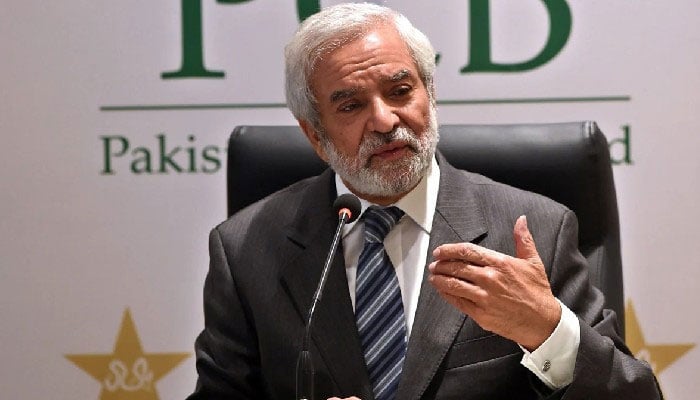World Cricket Conference
Verified Account
- Joined
- Oct 8, 2022
- Location
- Berlin, Germany
India, Denmark and the World Cup Final
Both teams have their strengths, and as the game unfolds, it will be a test of skill, strategy, and composure. Will India’s dominance continue, or will Denmark’s dream run continue to surprise? One thing is certain – this semifinal will be a cricketing spectacle that will keep fans on the edge of their seats until the very last ball.
Both teams have their strengths, and as the game unfolds, it will be a test of skill, strategy, and composure. Will India’s dominance continue, or will Denmark’s dream run continue to surprise? One thing is certain – this semifinal will be a cricketing spectacle that will keep fans on the edge of their seats until the very last ball.

Vijay Kambli and Pramod Krishnakumar during media day before the second semifinal © Associated Press, December 24, 2003
PREVIEW: SEMI-FINAL 2
As the Cricket World Cup draws to a close, and as the tournament reaches its climax, anticipation is mounting for the second semifinal, which promises to be a spectacle of between two behemoths of the ODI format. On one side of the field, we have India, the pre-tournament favorites, whose campaign has been nothing short of stellar. On the other, Denmark, the underdog story of the tournament, has defied expectations to secure a place in the semifinals ahead of South Africa. Their clash ahead is set to be a riveting contest which will determine the finalists who take on Niue in Auckland on the 28th of December.
India: The Unstoppable Force
India, a cricketing powerhouse, has been the team to beat throughout the tournament. With a roster brimming with talent and a track record of consistency, they enter this semifinal as the clear favorites. Despite facing two washed-out matches in the group stage, India has demonstrated their capability to rise to the occasion, remaining unbeaten in the process.
Their batting lineup, though not as prolific as usual, has shown moments of brilliance. Vikas Samant, surprisingly, has emerged as the top run-scorer for India. His match-winning innings against Canada has been a highlight of India’s campaign, underscoring his ability to perform under pressure. While their batting stars may not have been at their absolute peak, the depth and talent in India’s squad ensure they can turn the tide in their favor at any moment.
India’s bowling attack, led by the spin-wiz Mayas Kumble, has been a cornerstone of their success. Kumble’s exceptional performance, with 8 wickets at an average of 8.00, has made him a key player in India’s World Cup journey. Pramod Krishnakumar and Zeeshan Khan have supported him throughout despite having numbers that pale in comparison to Kumble's. India’s bowling unit, with its blend of skill and experience, is well-equipped to challenge any opposition.
Denmark: The Underdog’s Dream
Denmark’s run in the tournament has been nothing short of impressive. Despite a solitary defeat to the World Cup finalists in the group stage, Denmark has showcased their mettle and resilience. Their journey to the semifinals is a testament to their strength and determination, making them a formidable opponent for any team.
The Danish batting lineup has been anchored by standout performances from Chris Mattsson and Niels Hjort, who have amassed 180 and 163 runs respectively. Their ability to anchor innings and score crucial runs has been pivotal for Denmark. Additionally, Paul Boesen has provided vital contributions with two fifties, further bolstering Denmark’s batting credentials.
In terms of bowling, Denmark’s attack has been exceptional. Chris Fredriksson, Martin Lundgren, and Oliver Johansson have been the standout bowlers, with 11, 10, and 9 wickets respectively. Their collective performance has been instrumental in dismantling opposition line-ups. Complementing them are Felix Nørregaard and Aage Storgaard, who have also contributed significantly, making Denmark’s bowling attack one of the most lethal in the tournament.
The Battle Ahead
As India and Denmark gear up for this high-stakes semifinal, the clash promises to be a thrilling encounter. India’s star-studded lineup and unbeaten run position them as the favorites, but Denmark’s underdog spirit and well-rounded team dynamics make them a dangerous opponent.
The stakes couldn’t be higher. The winner of this semifinal will advance to face Niue at Eden Park in Auckland on the 28th of December, 2003, with the World Cup trophy on the line. Cricket fans around the world are in for a treat as two of the best teams in the world battle it out for a place in the final.
Both teams have their strengths, and as the game unfolds, it will be a test of skill, strategy, and composure. Will India’s dominance continue, or will Denmark’s dream run continue to surprise? One thing is certain – this semifinal will be a cricketing spectacle that will keep fans on the edge of their seats until the very last ball.










